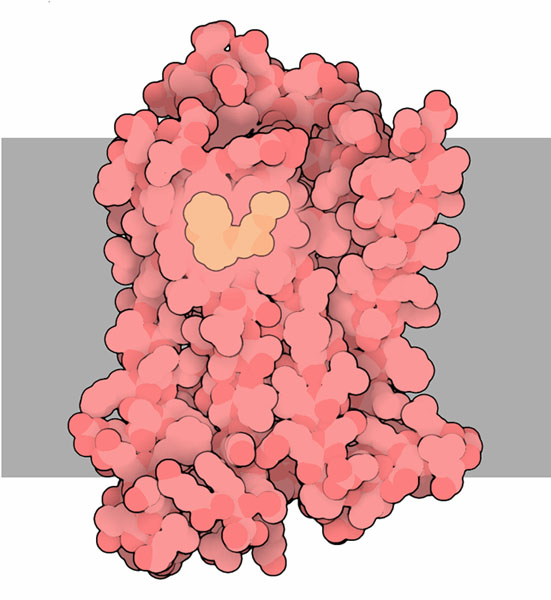|
Inhaltsübersicht | Nanomaschinen | Moleküle | Programme | Kurse | Fun | Links |
||
| > |
Adrenergic Receptors

Our bodies have many built-in defenses. Our immune system prowls through the body looking for infections by viruses and bacteria. Our blood is filled with molecules that form clots at the first sign of damage. Our nervous system is also hard-wired with instinctive defenses that stand ready to protect us in times of danger. You have probably experienced one of these defenses yourself--when you are startled or scared by an impending danger, you will feel a rush of energy flowing through your body. This has been termed the "flight or fight" response--your body is mobilizing its many resources to make you ready either to run away from danger, or stay and fight.
A Cascade of Response
The small hormone adrenaline, also known as epinephrine, is the messenger that tells cells to ready themselves in danger. It is released into the blood from the adrenal glands, which are situated on top of the kidneys. Then it spreads through the blood to cells throughout the body, where it is sensed by adrenergic receptors on the cell surface. When the adrenergic receptor is stimulated by adrenaline, it passes the message inside the cell to a G-protein. The G-protein then relays the message to a variety of other signaling enzymes, such as adenylyl cyclase, that amplify and spread the message through the cell. To see some of the structures involved in this signaling cascade, take a look at the earlier Molecule of the Month on G-proteins.
Feel the Rush
When the body is flooded with adrenaline, we focus all of our energy on the danger at hand. Defensive functions are activated, such as increasing the heart rate and providing more sugar in the blood. Normal housekeeping functions, such as digestion, are temporarily halted as we respond to the challenge. This requires different cells to respond differently to adrenaline--heart cells need to be activated, but cells in the digestive system need to wait for a better time to do their jobs. To orchestrate this range of responses, human cells build nine different types of adrenergic receptors, each with a slightly different effect. The one shown here, the beta-2 adrenergic receptor (PDB entry 2rh1), stimulates cells to increase energy production and utilization. Other types of adrenergic receptors are inhibitory, slowing the use of energy. By expressing one type or another on their surfaces, different cells tailor their responses to adrenaline, making themselves ready for an emergency.
Last changed by: A.Honegger,